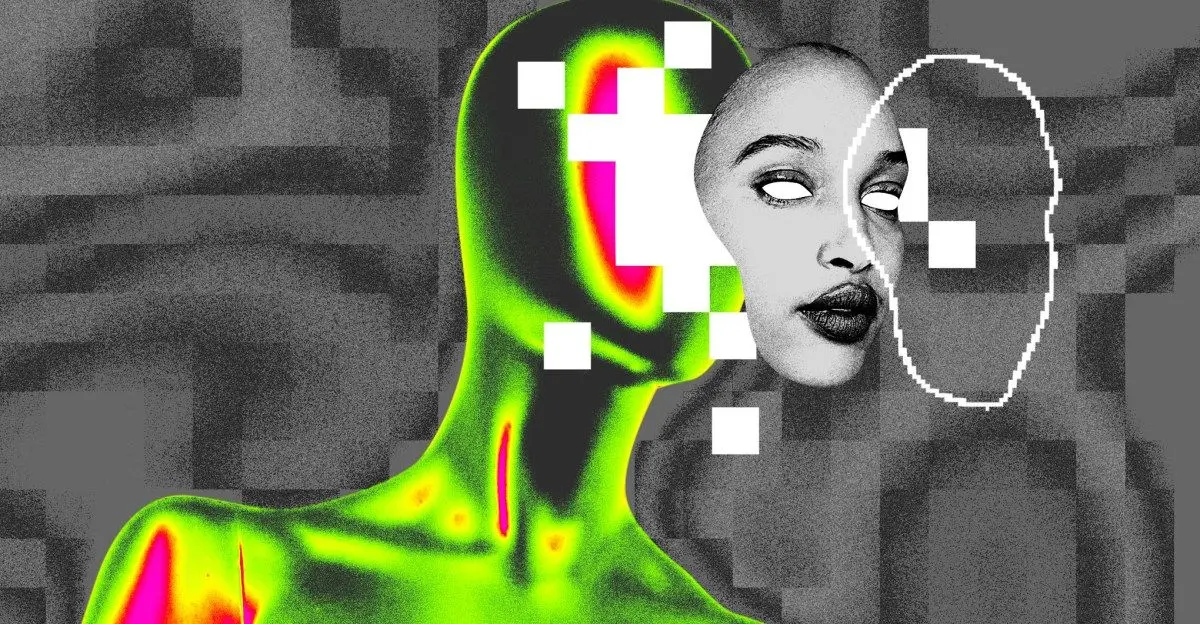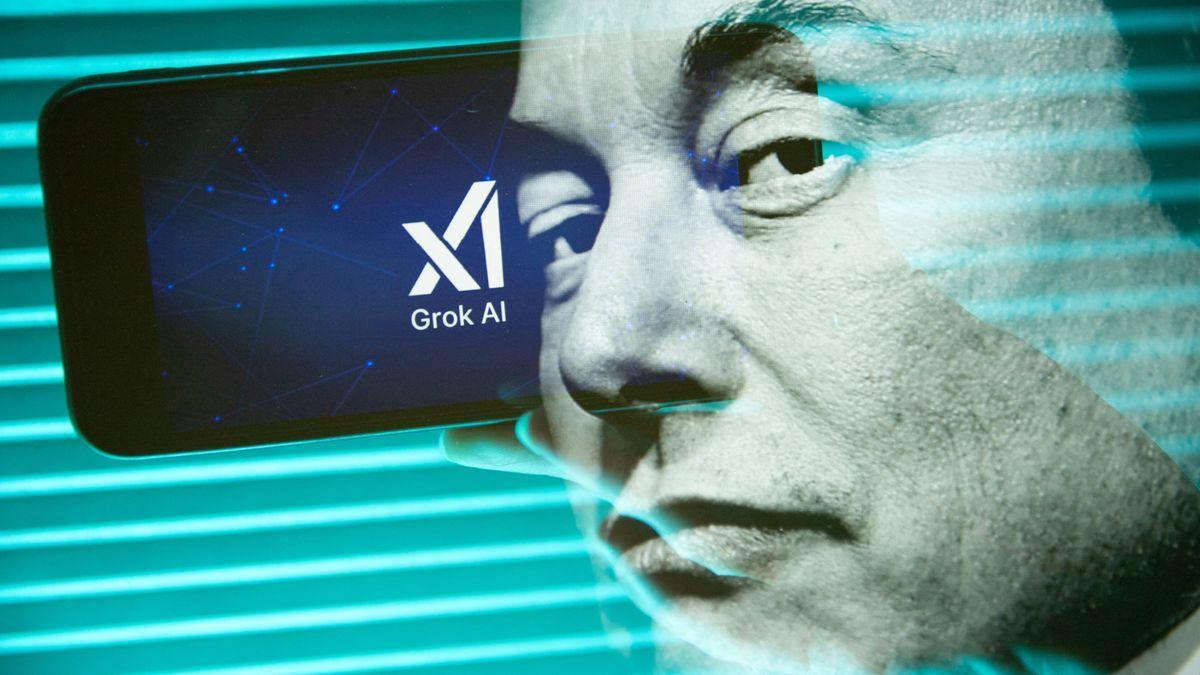Amazon's Alexa+ Upgrade: A Promising Yet Buggy AI Overhaul
2 Sources
2 Sources
[1]
Alexa Got an A.I. Brain Transplant. How Smart Is It Now?
For the last few years, I've been waiting for Alexa's A.I. glow-up. I've been a loyal user of Alexa, the voice assistant that powers Amazon's home devices and smart speakers, for more than a decade. I have five Alexa-enabled speakers scattered throughout my house, and while I don't use them for anything complicated -- playing music, setting timers and getting the weather forecast are basically it -- they're good at what they do. But since 2023, when ChatGPT added an A.I. voice mode that could answer questions in a fluid, conversational way, it has been obvious that Alexa would need a brain transplant -- a new A.I. system built around the same large language models, or L.L.M.s, that power ChatGPT and other products. L.L.M.-based systems are smarter and more versatile than older systems. They can handle more complex requests, making them an obvious pick for a next-generation voice assistant. Amazon agrees. For the last few years, the company has been working feverishly to upgrade the A.I. inside Alexa. It has been a slog. Replacing the A.I. technology inside a voice assistant isn't as easy as swapping in a new model, and the Alexa remodel was reportedly delayed by internal struggles and technical challenges along the way. L.L.M.s also aren't a perfect match for this kind of product, which not only needs to work with tons of pre-existing services and millions of Alexa-enabled devices, but also needs to reliably perform basic tasks. But finally, the new Alexa -- known as Alexa+ -- is here. It's a big, ambitious remodel that is trying to marry the conversational skills of generative A.I. chatbots with the daily tasks that the old Alexa did well. Alexa+, which has been available to testers through an early-access program for a few months, is now being rolled out more widely. I got it last week after I bought a compatible device (the Echo Show 8, which has an eight-inch screen) and enrolled in the upgraded version. (Prime members will get Alexa+ at no cost, while non-Prime members will have to pay $19.99 per month.) The New York Times recently announced a licensing deal with Amazon, which will allow Amazon to use Times content in its A.I. systems, including Alexa+. The Times is also suing OpenAI, the maker of ChatGPT, and Microsoft for alleged copyright violations related to the training of A.I. systems. Two steps forward, one step back I have good news and bad news for my fellow Alexa-heads. The good news is that the new Alexa+ is, in fact, more fun to talk to than the old one, with more realistic synthetic voices and a more humanlike cadence. (There are eight voices to choose from; I used the default setting, an upbeat female voice.) And I liked some of Alexa+'s new capabilities, such as booking a table at a restaurant and generating long stories and reading them to my 3-year-old. The new Alexa is also better at handling multistep requests. "Set three kitchen timers for 15, 25 and 45 minutes" and "write a one-day itinerary for a trip to San Diego and send it to my email" were two prompts that worked for me. And Alexa+ doesn't require you to say its wake word every time you talk to it, so you can go back and forth or ask it follow-up questions, which is a nice change. The bad news is that despite its new capabilities, Alexa+ is too buggy and unreliable for me to recommend. In my testing, it not only lagged behind ChatGPT's voice mode and other A.I. voice assistants I've tried, but was noticeably worse than the original Alexa at some basic tasks. When I asked Alexa+ to cancel an alarm the other morning -- a request I had made to the old Alexa hundreds of times with no issues -- it simply ignored me. When I emailed a research paper to [email protected], in order to hear Alexa+ summarize it while I washed the dishes, I got an error message saying the document couldn't be found. Alexa+ also hallucinated some facts and made some inexplicable errors. When I asked it to look up Wirecutter's recommended box grater and add it to my Amazon cart, it responded that "according to Wirecutter, the best box grater is the OXO Good Grips Box Grater." Wirecutter's actual box grater pick is the Cuisipro 4-Sided Box Grater. Luckily, I caught the mistake before ordering. When I asked Alexa+ to walk me through installing a new A.I. model on my laptop, it got tripped up and started repeating, "Oh, no, my wires got crossed." Behind the Journalism Our business coverage. Times journalists are not allowed to have any direct financial stake in companies they cover. Here's more on our standards and practices. And I didn't have access to some of the new Alexa+ features Amazon advertised, such as a "routine" feature that triggers several different actions when a user enters a room. (I wanted to have Alexa+ greet me in the mornings with a motivational speech and a high-volume rendition of "Eye of the Tiger," but the presence-sensing feature hasn't been turned on yet, according to an Amazon spokesman.) Daniel Rausch, the Amazon vice president who oversees Alexa and Echo, told me in a podcast interview this week that many of these flaws would be fixed soon, as Alexa+ rolled out more widely and more of its features came online. "We've got some edges to sand," he said. Alexa, give me 500 words on the history of kitchen timers Mr. Rausch said the biggest challenge in building generative A.I. models into Alexa was that they were fundamentally different types of systems. The old Alexa, he said, was built on a complicated web of rule-based, deterministic algorithms. Setting timers, playing songs on Spotify, turning off the lamp in your living room -- all of these features required calling up different tools and connecting with different interfaces, and they all had to be programmed one by one. Adding generative A.I. to Alexa forced Amazon to rebuild many of these processes, Mr. Rausch said. Large language models, he said, are "stochastic," meaning they operate on probabilities rather than a strict set of rules. That made Alexa more creative, but less reliable. It also made the voice assistant slow. Mr. Rausch recalled an early internal demo in which Alexa+ took more than 30 seconds to play a song, an "excruciating" delay, he said, that led the team to rethink its approach. "These models are slow to respond when they're following a deep set of instructions," he said. "We're asking them to do something quite hard." Another challenge to overcome, Mr. Rausch said, was generative A.I.'s wordiness. Initially, when engineers hooked Alexa up to large language models, the system would sometimes produce long, verbose answers, or introduce needless complexity. Alexa+ might respond to a user's request for a 10-minute kitchen timer with a 500-word essay about the history of kitchen timers. The solution, Mr. Rausch said, was to spend several years combining more than 70 A.I. models -- some Amazon's proprietary models and some from outside providers, like Anthropic's Claude -- into a single, voice-based interface, with an orchestration system that routes a user's request to the model that is best suited to handle it. "The magic, when it is working really well, is to get those new ways of speaking to Alexa to interface with those predictable outcomes or behaviors," he said. Learning a new language There are other barriers, too. One of them, Mr. Rausch said, is that many longtime users have learned how to "speak Alexa," phrasing their daily requests in familiar commands that they know the system will understand. "We all sort of came up with our way of setting a timer to get the pasta done on time," he said. But Alexa+ processes language in a more fluid way. Users can talk to it as they would talk to a human -- no robot pidgin required -- and that may necessitate some retraining. I assume that many of the flaws will be ironed out, and that most users will acclimate to the new way of speaking to Alexa+. I'm also inclined to cut Amazon some slack, since building L.L.M.-based technology into a reliable voice assistant seems like a thorny technical problem, and it's not like anyone else has solved it. (Apple, which has been struggling to give Siri an A.I. upgrade for years, certainly hasn't.) I also don't think the limitations of Alexa+ suggest that generative A.I. models are inherently unreliable, or that they'll never work as personal voice assistants. Ultimately, I think it's just really hard to combine generative A.I. with older, legacy systems -- a lesson many companies, both inside and outside tech, are learning the hard way right now -- and it's going to take some time to work out all the kinks. For now, I'm going to downgrade my devices to the older, less intelligent version of Alexa, and leave the beta testing to others. With A.I., as with humans, sometimes raw intelligence matters less than how you use it.
[2]
Alexa got an AI brain transplant: How smart is it now - The Economic Times
Amazon's Alexa+ upgrades the voice assistant with generative AI for more natural conversation, multitasking, and creative responses. While promising features like restaurant booking and follow-up questions impress, testing revealed bugs, slower performance, and errors. For the last few years, I've been waiting for Alexa's AI glow-up. I've been a loyal user of Alexa, the voice assistant that powers Amazon's home devices and smart speakers, for more than a decade. I have five Alexa-enabled speakers scattered throughout my house, and while I don't use them for anything complicated -- playing music, setting timers and getting the weather forecast are basically it -- they're good at what they do. But since 2023, when ChatGPT added an AI voice mode that could answer questions in a fluid, conversational way, it has been obvious that Alexa would need a brain transplant -- a new AI system built around the same large language models, or LLMs, that power ChatGPT and other products. LLM-based systems are smarter and more versatile than older systems. They can handle more complex requests, making them an obvious pick for a next-generation voice assistant. Amazon agrees. For the last few years, the company has been working feverishly to upgrade the AI inside Alexa. It has been a slog. Replacing the AI technology inside a voice assistant isn't as easy as swapping in a new model, and the Alexa remodel was reportedly delayed by internal struggles and technical challenges along the way. LLMs also aren't a perfect match for this kind of product, which not only needs to work with tons of preexisting services and millions of Alexa-enabled devices but also needs to reliably perform basic tasks. But finally, the new Alexa -- known as Alexa+ -- is here. It's a big, ambitious remodel that is trying to marry the conversational skills of generative AI chatbots with the daily tasks that the old Alexa did well. Alexa+, which has been available to testers through an early-access program for a few months, is now being rolled out more widely. I got it recently after I bought a compatible device (the Echo Show 8, which has an 8-inch screen) and enrolled in the upgraded version. (Prime members will get Alexa+ at no cost, while non-Prime members will have to pay $19.99 per month.) The New York Times recently announced a licensing deal with Amazon, which will allow Amazon to use Times content in its AI systems, including Alexa+. The Times is also suing OpenAI, the maker of ChatGPT, and Microsoft for alleged copyright violations related to the training of AI systems. Two steps forward, one step back I have good news and bad news for my fellow Alexa-heads. The good news is that the new Alexa+ is, in fact, more fun to talk to than the old one, with more realistic synthetic voices and a more humanlike cadence. (There are eight voices to choose from; I used the default setting, an upbeat female voice.) And I liked some of Alexa+'s new capabilities, such as booking a table at a restaurant and generating long stories and reading them to my 3-year-old. The new Alexa is also better at handling multistep requests. "Set three kitchen timers for 15, 25 and 45 minutes" and "write a one-day itinerary for a trip to San Diego and send it to my email" were two prompts that worked for me. And Alexa+ doesn't require you to say its wake word every time you talk to it, so you can go back and forth or ask it follow-up questions, which is a nice change. The bad news is that despite its new capabilities, Alexa+ is too buggy and unreliable for me to recommend. In my testing, it not only lagged behind ChatGPT's voice mode and other AI voice assistants I've tried but also was noticeably worse than the original Alexa at some basic tasks. When I asked Alexa+ to cancel an alarm the other morning -- a request I had made to the old Alexa hundreds of times with no issues -- it simply ignored me. When I emailed a research paper to [email protected] in order to hear Alexa+ summarize it while I washed the dishes, I got an error message saying the document couldn't be found. Alexa+ also hallucinated some facts and made some inexplicable errors. When I asked it to look up Wirecutter's recommended box grater and add it to my Amazon cart, it responded that "according to Wirecutter, the best box grater is the OXO Good Grips Box Grater." Wirecutter's actual box grater pick is the Cuisipro 4-Sided Box Grater. Luckily, I caught the mistake before ordering. When I asked Alexa+ to walk me through installing a new AI model on my laptop, it got tripped up and started repeating, "Oh, no, my wires got crossed." And I didn't have access to some of the new Alexa+ features Amazon advertised, such as a "routine" feature that triggers several different actions when a user enters a room. (I wanted to have Alexa+ greet me in the mornings with a motivational speech and a high-volume rendition of "Eye of the Tiger," but the presence-sensing feature hasn't been turned on yet, according to an Amazon spokesperson.) Daniel Rausch, the Amazon vice president who oversees Alexa and Echo, told me in a recent podcast interview that many of these flaws would be fixed soon as Alexa+ rolled out more widely and more of its features came online. "We've got some edges to sand," he said. Alexa, give me 500 words on the history of kitchen timers Rausch said the biggest challenge in building generative AI models into Alexa was that they were fundamentally different types of systems. The old Alexa, he said, was built on a complicated web of rule-based, deterministic algorithms. Setting timers, playing songs on Spotify, turning off the lamp in your living room -- all of these features required calling up different tools and connecting with different interfaces, and they all had to be programmed one by one. Adding generative AI to Alexa forced Amazon to rebuild many of these processes, Rausch said. Large language models, he said, are "stochastic," meaning they operate on probabilities rather than a strict set of rules. That made Alexa more creative but less reliable. It also made the voice assistant slow. Rausch recalled an early internal demo in which Alexa+ took more than 30 seconds to play a song -- an "excruciating" delay, he said, that led the team to rethink its approach. "These models are slow to respond when they're following a deep set of instructions," he said. "We're asking them to do something quite hard." Another challenge to overcome, Rausch said, was generative AI's wordiness. Initially, when engineers hooked Alexa up to large language models, the system would sometimes produce long, verbose answers or introduce needless complexity. Alexa+ might respond to a user's request for a 10-minute kitchen timer with a 500-word essay about the history of kitchen timers. The solution, Rausch said, was to spend several years combining more than 70 AI models -- some Amazon's proprietary models and some from outside providers, like Anthropic's Claude -- into a single, voice-based interface, with an orchestration system that routes a user's request to the model that is best suited to handle it. "The magic, when it is working really well, is to get those new ways of speaking to Alexa to interface with those predictable outcomes or behaviors," he said. Learning a new language There are other barriers, too. One of them, Rausch said, is that many longtime users have learned how to "speak Alexa," phrasing their daily requests in familiar commands that they know the system will understand. "We all sort of came up with our way of setting a timer to get the pasta done on time," he said. But Alexa+ processes language in a more fluid way. Users can talk to it as they would talk to a human -- no robot pidgin required -- and that may necessitate some retraining. I assume that many of the flaws will be ironed out and that most users will acclimate to the new way of speaking to Alexa+. I'm also inclined to cut Amazon some slack, since building LLM-based technology into a reliable voice assistant seems like a thorny technical problem, and it's not like anyone else has solved it. (Apple, which has been struggling to give Siri an AI upgrade for years, certainly hasn't.) I also don't think the limitations of Alexa+ suggest that generative AI models are inherently unreliable or that they'll never work as personal voice assistants. Ultimately, I think it's just really hard to combine generative AI with older, legacy systems -- a lesson many companies, both inside and outside tech, are learning the hard way right now -- and it's going to take some time to work out all the kinks. For now, I'm going to downgrade my devices to the older, less intelligent version of Alexa and leave the beta testing to others. With AI, as with humans, sometimes raw intelligence matters less than how you use it.
Share
Share
Copy Link
Amazon introduces Alexa+, a major AI upgrade to its voice assistant, aiming to compete with ChatGPT's conversational abilities. While offering improved features, early testing reveals significant bugs and reliability issues.
Amazon Introduces Alexa+: A Major AI Upgrade
Amazon has unveiled Alexa+, a significant upgrade to its popular voice assistant, Alexa. This new version incorporates large language models (LLMs) similar to those powering ChatGPT, aiming to enhance Alexa's conversational abilities and functionality
1
. The upgrade represents Amazon's response to the growing competition in the AI assistant market, particularly from advanced chatbots like ChatGPT.
Source: NYT
Key Features and Improvements
Alexa+ boasts several new capabilities that set it apart from its predecessor:
- More natural conversations: The upgrade offers more realistic synthetic voices and a more human-like cadence
1
. - Multi-step requests: Users can now make complex, multi-part requests, such as setting multiple timers or creating itineraries
2
. - Continuous conversation: Alexa+ eliminates the need to use a wake word for every interaction, allowing for more fluid conversations
1
. - Creative tasks: The assistant can now generate and read long stories, appealing to users with children
2
.

Source: ET
Challenges and Limitations
Despite these improvements, early testing has revealed significant issues with Alexa+:
- Reliability concerns: The new version sometimes fails at basic tasks that the original Alexa handled effortlessly, such as canceling alarms
1
. - Accuracy problems: Alexa+ has been observed to hallucinate facts and make inexplicable errors, such as providing incorrect product recommendations
2
. - Technical glitches: Some advertised features, like presence-sensing routines, are not yet functional
1
.
Development Challenges
Daniel Rausch, Amazon's vice president overseeing Alexa and Echo, acknowledged the difficulties in integrating LLMs into Alexa's existing infrastructure. The primary challenge stems from the fundamental differences between the rule-based, deterministic algorithms of the original Alexa and the more flexible, generative AI models
1
.Related Stories
Availability and Pricing
Alexa+ is currently being rolled out to users who have compatible devices, such as the Echo Show 8. Amazon Prime members will receive the upgrade at no additional cost, while non-Prime users will need to pay $19.99 per month for access
2
.Industry Implications
The introduction of Alexa+ highlights the ongoing competition in the AI assistant market. Amazon's efforts to upgrade Alexa demonstrate the company's commitment to maintaining its position in the smart home ecosystem. However, the current limitations of Alexa+ suggest that the integration of advanced AI capabilities into practical, everyday devices remains a significant challenge for tech companies
1
2
.References
Summarized by
Navi
Related Stories
Recent Highlights
1
Nvidia drops $20 billion on AI chip startup Groq in largest acquisition ever
Business and Economy

2
Meta acquires Manus for $2 billion, adding revenue-generating AI agents to its platforms
Business and Economy

3
China proposes world's strictest AI chatbot rules to prevent suicide and emotional manipulation
Policy and Regulation







